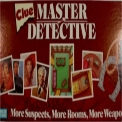Monday, February 8: The Scribbler
HIGH CONCEPT
by James Lincoln Warren

Per Rob’s request, today’s column concerns the Hollywood idea of high concept.
Simply put, the phrase “high concept” describes a story, especially a movie, that can be pitched by using a catchphrase that evokes a contrived premise, one that explains all ye need to know about the story and all ye need to know. HC is plot gimmickry in its purest application. The most notorious high concept movie of recent vintage was “Snakes on a Plane”. The title itself tells you everything there is to know worth knowing.
The phrase high concept first appeared in the late 1970s, and really took off in the 80s, but the idea is hardly new. Consider, for example, the 1955 Hitchcock classic, “To Catch a Thief” starring Cary Grant and Grace Kelly, based on a 1952 novel of the same name by David Dodge. The story can be summarized as follows: “Cat burglar proves his innocence by coming out of retirement.” Unlike most HC entertainments, “To Catch a Thief” happens to be a very good movie, as one would expect with Hitch at the helm and such attractive leads, but the gimmick is obvious. Another early example is the classic 1950 film noir “D.O.A.”: “Poisoned man has 24 hours to solve his own murder before dying.”
I was probably late coming to the party, but the first HC movie to impinge itself on my consciousness as a blatantly high concept vehicle was the comedy “Twins” (1988), which was almost certainly pitched as follows: “Danny DeVito and Arnold Schwarzenegger as twins separated at birth.”
Monk is high concept: “Brilliant detective—but he’s got OCD”. (Unlike many of my colleagues, I am not a fan, since I think the show trivializes OCD, something with which I have struggled for many years.) Back in 1984, Brandon Tartikoff, then head of NBC’s entertainment division, pitched Miami Vice to producer Michael Mann as “MTV cops.”1
Not all stories based on a simple premise, not even blatantly formulaic ones, are HC, not by a long stretch. The central element is that pervasive gimmick. USA Network’s White Collar, which deals with a convicted forger helping the FBI solve crimes, is high concept, but their In Plain Sight, which tells stories about U.S. Marshalls in the Witness Protection Program, clearly isn’t. You might think that Walter Mosley’s stories are high concept (“ … hard-boiled P.I., but he’s black”), likewise Tony Hillerman’s books (“ … police procedurals, but on an Indian reservation”), and you could be on to something—but only if Easy Rawlins’ and Joe Leaphorn’s ethnicity was why people were attracted to the stories, which I don’t think is the case. On the other hand, the proliferation of gimmick private detectives in the 80s and 90s was clearly driven by the triumph of high concept.
High concept, which is often used as a pejorative term, is only bad when the gimmick drives out everything else that makes a story worthwhile; in other words, whether the gimmick is used to launch an engaging story or if it’s the story’s only salient feature. As I said, “D.O.A.” was a great movie, but “Alien vs. Predator” clearly wasn’t. I liked “Beverly Hills Cop”, but loathed “Gremlins”.
Likewise, HC isn’t exactly the same thing as a hook or a MacGuffin, both of which are amenable to being tersely expressed, although HC can operate as both hook and MacGuffin. A hook is something meant to attract the readers to a story—the rumor of a spectral hound in The Hound of the Baskervilles, the pervasive Santa Ana winds in “Red Wind”, Melvin Udall’s OCD in “As Good as It Gets”. (I know what you’re thinking: shades of Monk, but “As Good as It Gets” accurately portrays the crippling nature of OCD in a way that Monk usually completely avoids.) A MacGuffin2 is a plot device, frequently incredible on its own merits, that drives the action but is otherwise irrelevant: the letters of transit in “Casablanca”, the precious statuette in The Maltese Falcon, the mythical George Kaplan in “North by Northwest”.
In fine, high concept is a story-telling technique, one of the contents of a story-teller’s bulging bag o’ tricks. As with everything technical, high concept can be your best friend or your worst enemy. I am fond of saying that technique has no inherent value, because its only value is in how effectively it helps in telling a good story. I suppose you could call that Warren’s Thirteenth Law—must add it to the list.
What a concept.
- I know this because I once heard Stephen J. Cannell tell an audience that Tartikoff pitched the show to him first using those exact words, but that Cannell declined. [↩]
- Recapitulating an earlier note made in this column some time ago concerning MacGuffins: said term was allegedly coined by Alfred Hitchcock’s friend, Scottish screenwriter Angus MacPhail, and denotes a device for setting the action in motion but which has no reality or importance in and of itself. Hitchcock himself apparently claimed it was a device for capturing lions in the Scottish Highlands. [↩]




















Thanks, James. Very interesting. It reminded me of an interview I read once with the producer of Star Trek: Next Generation, in which he said that after the movie Silence of the Lambs came out, half the scripts they got were about a captured serial killer being transplanted on the Enterprise. They didn’t use them but they did an excellent show called “Starship Mine” which was clearly sold as “Die Hard on a starship.”
And thank you for defining MacGuffin correctly. Always bugs me when people use it as a synoym for “plot device.”
It is indeed an interesting column. Lot of info in there that I sure didn’t know. Many thanks!
I loved the movie poster: my two big fears wrapped into one! (I wonder how they pitched the new Dante’s Inferno movie?)
The earliest direct Hollywood reference to “high concept” that I know of is an interview with Billy Wilder regarding SOME LIKE IT HOT:
“The picture was quite an easy sell. Tony and Jack in dresses was a high concept that the studio could understand without much thought.”
Now, that interview was from the late sixties, so he may have picked up the term from someone else.
As far as I know, Hollywood’s definition of high concept has evolved to the current term “Tent pole.” A tent pole film is (or at least was) the one huge budget film the studio released that year which was guaranteed to make hundreds of millions and thus, keep the tent (the studio) from collapsing. The ironic thing is that many said tent pole films were to blame when studios looked at their losses for the year.
High Concept in Hollywood used to mean exactly what Jim says. TWINS and SNAKES ON A PLANE are good examples because they’re very different versions of the exact same thing.
TWINS on its own is not high concept, but pitching Danny and Arnold as twins is. Just like SOME LIKE IT HOT. And that is exactly how that movie came to be. There was no script, no concept, nothing. Someone just said wouldn’t it be funny if those two guys played twins.
SNAKES ON A PLANE was a completely different, but still high concept project. The script was basically laughed out of studio offices all over town. Then it went to Sam Jackson’s people and he agreed to do the film WITHOUT reading the script so long as it was written into the contract that the title could not be changed.
So it was more a star’s personal whim, rather than a high concept pitch or idea that got that film made.
As a side note to S.O.A.P., I always love using this film as an example that the Internet is grossly overrated as far as a marketing tool, and/or any type of measuring device for public interest. SOAP was the single most widely anticipated and discussed film in the history of the Internet.
Studios did marketing analysis and many predicted the film would make half a billion dollars or more. Some said it would rival TITANIC. All believed it would be the single highest profit film in Hollywood history.
The movie came and went making a decent little profit because the budget was so low, but that was it. See people? The Internet IS the Emperor’s new clothes.
Okay, back to High Concept. As I said, Hollywood execs of today now cross-pollinate high concept with tent pole, and now both terms are hybrids of their original meanings.
Some execs will say a high concept film is only a SPIDERMAN or AVATAR – something that costs two hundred million to make. Others will say a high concept film is the old one sentence description – “A cop is forced to investigate a murder he committed.” But there are many non-high concept films where the story can be described in one sentence.
BEVERLY HILLS COP was actually not considered high concept when it was made. It was only in retro analysis that it was given the high concept label. When it was being developed and made it was simply one of the many “buddy cop films” being released at the time – which now we all consider high concept films.
But in the mid-80’s the term high concept was only applied to films like GHOSTBUSTERS, RAIDERS, SPLASH, BACK TO THE FUTURE, etc. This was because the term’s original definition basically meant any movie idea (one sentence or not) that was “bigger than life” or “outside normal human behavior or heightened reality.”
As Jim pointed out – something having nothing to do with whether the story was good or not, just that the concept made you go “Wow.”
But regardless of how/when/why the term is used, Jim is right in that it always means gimmickry.
Thanks, Paul! (The Gentle Reader might have correctly guessed that I asked him to drop by and share his thoughts with us on this topic.) You make the history of “high concept” three-dimensional.
Wait! 3-D? Maybe I’m on to something …